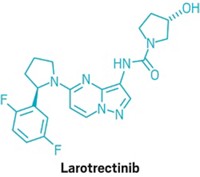Advertisement
Grab your lab coat. Let's get started
Welcome!
Welcome!
Create an account below to get 6 C&EN articles per month, receive newsletters and more - all free.
It seems this is your first time logging in online. Please enter the following information to continue.
As an ACS member you automatically get access to this site. All we need is few more details to create your reading experience.
Not you? Sign in with a different account.
Not you? Sign in with a different account.
ERROR 1
ERROR 1
ERROR 2
ERROR 2
ERROR 2
ERROR 2
ERROR 2
Password and Confirm password must match.
If you have an ACS member number, please enter it here so we can link this account to your membership. (optional)
ERROR 2
ACS values your privacy. By submitting your information, you are gaining access to C&EN and subscribing to our weekly newsletter. We use the information you provide to make your reading experience better, and we will never sell your data to third party members.
Biological Chemistry
Personalizing Medicine
Taking The Guesswork Out Of Breast Cancer Treatment
by Lisa M. Jarvis
August 7, 2006
| A version of this story appeared in
Volume 84, Issue 32
The words "personalized medicine" can conjure an image of a complex drug cocktail that has been mixed to match a patient's genetics perfectly. The reality, however, is turning out to be a bit less glamorous. Although a few drugs are highly specific for genetic mutations, such as Novartis' Gleevec for leukemia and Genentech's Herceptin for breast cancer, personalizing medicine more often means understanding how to apply genetics in order to use existing drugs more effectively.
In May, the National Cancer Institute (NCI) launched the Trial Assigning Individualized Options for Treatment, or TAILORx, to figure out how to get the most benefit with the fewest side effects when chemotherapy is used to treat a common type of breast cancer.
Women with estrogen-receptor-positive, lymph-node-negative breast cancer will account for more than half of the roughly 212,920 new cases of breast cancer expected to be reported in the U.S. this year. The overwhelming majority of those women will be treated with the current standard of care: surgical removal of the tumor followed by radiation, hormone therapy, and, in many cases, chemotherapy.
While many women receive chemotherapy as a preventive measure, only a small portion of them actually need the treatment, which can have harsh side effects. "Standard guidelines tell us that we should be giving chemo to 90% of those patients, even though maybe only 10-20% will see the disease recur," says Julie R. Gralow, associate professor of medical oncology at the University of Washington and Fred Hutchinson Cancer Research Center, in Seattle.
TAILORx is designed to get to the bottom of whether chemotherapy does more harm than good in the group of patients that are at a low-to-moderate risk of having their breast cancer return.
The study will use the OncoType DX assay, developed by the Redwood City, Calif., diagnostics firm Genomic Health, to analyze the levels of expression of 21 genes in breast tumors and come up with a patient's "recurrence score." That score will be used to stratify patients into risk groups that will determine whether chemotherapy should be added to their treatment regimens. The lowest scoring group will be given just hormone therapy, while the highest scorers will get both hormone therapy and chemotherapy.
The roughly 44% of patients who fall in the gray area in between will be divided randomly into groups that receive hormone therapy with or without chemotherapy.
The trial results are expected to take several years to accrue, particularly since patients in the middle group who are selected to receive hormone therapy alone may opt to add chemotherapy, just to be on the safe side. "We know that it is hard to accept the randomization of getting chemo or not," Gralow says.
Once doctors get a better handle on whether or not a patient should receive chemotherapy, the next step to truly personalized medicine will be to eliminate the trial and error involved in figuring out what kind of chemotherapy patients should receive. The ultimate goal, Gralow says, is to develop assays that can predict those chemotherapeutic agents to which a patient's tumor will respond.
MORE ON THIS STORY



Join the conversation
Contact the reporter
Submit a Letter to the Editor for publication
Engage with us on Twitter